- Home
- Bill James
Popular Crime Page 2
Popular Crime Read online
Page 2
Elizabeth Canning’s supporters raised money for her to travel to America in comfort and with a little bit of a purse, to which the British judicial system made no objections. On the ship across the Atlantic she was befriended by a Philadelphia minister and his wife. She met and married a well-off young man named John Treat, the grandson of a former Connecticut governor, bore three sons and a daughter, died before the revolution, and is believed to be buried in Wethersfield, Connecticut.
The modern American phenomenon of popular crime stories is in absolutely no way new, modern, or American. That it is truly a universal phenomenon throughout human history perhaps should not be asserted without a more complete survey, but I know of no society which did not have sensational crimes and huge public interest in them, except perhaps societies which were so repressive that the government was able to quash them.
Crime stories rush by us like oncoming traffic. New crime stories emerge in the national media almost every day. Each one roars by us for a few days, is remarked upon in casual conversation and filed away as something less than a memory. Occasionally a crime story turns and follows us, visible in our mirror for months or years afterward. Each one is important to somebody, and a few of them—something less than 2% of the murders—become books.
We are, not as a nation but as human beings, fascinated by crime stories, even obsessed with them. The Bible is full of them. On your television at this moment there are four channels covering true crime stories, and five more doing detective fiction. And yet, on a certain level, we are profoundly ashamed of this fascination. If you go into a good used book store and ask if they have a section of crime books, you will get one of two reactions. One is, the clerk will look at you as if you had asked whether they had any really good pornography. The other is, they will tell you that the crime books are down the aisle on your left, in the alcove beside the detective stories. Right next to the pornography.
The internet service that I use headlines news stories with links to them. A huge percentage of these are crime stories—yet in the chart attached, where their news summaries are sorted into categories, there is no category for crime. Maybe a third of their top news stories are crime stories; you would think that would rate one category among their 25. Apparently not.
Cable television networks which are financed and organized with high-minded civic purposes—the Biography channel, Arts & Entertainment Network, Discovery Channel—find themselves being swallowed up by crime stories, because when they put on crime stories, people watch. Forensics are a wedge, respectable science applied to dirty little crime.
If you go to a party attended by the best people—academics and lawyers, journalists and school bus drivers, those kinds of people … if you go to a party populated by the NPR crowd and you start talking about JonBenet Ramsey, people will look at you as if you had forgotten your pants. If you are a writer and you try to talk your editor into working on a book about famous crimes, he or she will instantly begin hedging you toward something more … something more decent. Maybe if you included a chapter on Watergate, it would be alright. If you write anything about JonBenet, you need to say how un-important that really was, compared to the attention it drew; that’s really the only appropriate thing to be said about that case.
If you try to talk to American intellectuals and opinion-makers about the phenomenon of famous crimes, they immediately throw up a shield: I will not talk about this. I am a serious and intelligent person. I am interested in politics and the environment. I do not talk about Natalee Holloway. It is as if they were afraid of being dirtied by the subject.
Of course, no one has a social responsibility to be interested in Rabbi Neulander; that’s not what I am saying. What I am saying is that given the magnitude of this subject, given the extent to which it occupies the attention of the nation, there are a series of obvious questions which one might guess would be matters of public discussion, but which are not discussed anywhere because the kind of people who participate in the national conversation are terrified of being thrown out of the boat if they confess to an interest in such vulgar matters. Why do some crime stories become famous? Why does the Scott Peterson case become a national circus, while a thousand similar cases attract nothing beyond local notice? Why are people interested in crime stories? Is this a destructive phenomenon, as so many people assume it to be, or is there a valid social purpose being served? Who benefits from this? Who suffers from it? Who makes the critical decisions that cause crime stories to explode or fizzle? Are these stories actually significant to the nation, or are they truly as petty and irrelevant as intellectuals tend to assume they are?
Beyond this roomful of questions there is another room where the questions are yet more important. Does our criminal justice system work well? How could it work better? When it fails, why does it fail? How could this failure have been avoided? Do the rules make sense? What does it take to earn a conviction? What should it take?
Crime stories are very often the basis on which new laws are proposed and old ones modified. We have Megan’s Law and Sarah’s Law and Jeremy’s Law and Amber Alerts. This has been true for many years. In the 18th century several new laws sprung from the story of Elizabeth Canning. In the 1930s we had the Lindbergh Laws and the Little Lindbergh Laws. A great deal of our law and of our criminal procedure has always been shaped and re-shaped by these very famous crimes that the best people refuse to discuss.
Of course there is a national discussion about those types of issues—among the lawyers. When the rest of us try to comment, we are reminded firmly that we are not lawyers and therefore don’t know what we’re talking about. No one writes about these issues. Name a book by a non-lawyer, published in the last ten years for the general public, which attempts to discuss these issues in a serious way. On truTV, whenever a guest tries to comment on some irrational wrinkle of judicial procedure, some self-important lawyer immediately steps forward to “explain” why the system has to work this way, why the system of justice would collapse if a juror were allowed to read a news report about the case or a cop was allowed to mention his prior run-ins with the defendant.
It is not my intention to bash lawyers. It is my belief that the lay public—non-lawyers—should participate actively in the discussion of crime and justice. It is my notion that popular crime stories could be and should be a passageway that the lay public uses to enter into that discussion.
I said that no one writes about these issues, which is not literally true. I am sure that in some corner of the academic world there hides an intellectual who knows vastly more about these issues than I do and has written 208 published articles about them, which none of us have ever heard of, probably because he writes like a troll, or, not to be sexist, she writes like a troll or trollette. I am not here to bash intellectuals, either; I’m just a sarcastic bastard by nature.
This book is about three things. First, it is about famous crimes, and in particular about famous crimes which have happened in the United States since about 1880. Second, it is about crime, in a general way, about the kinds of issues I have tried to introduce here.
And third, it is about crime books. I am not a lawyer or an academic, nor even a cop or a court groupie. My understanding of these issues is based on what I have read, which includes a thousand or more crime books. There is, to the best of my knowledge, no book about crime books.
The world has lost track of Elizabeth Canning’s grave. She lies somewhere in Connecticut, but no one seems to know exactly where. Her story is not a part of proper history, you see; she is just someone in whom the world was so foolish as to take an interest. We know where ancient athletes were born and where they died, and the same for actors and politicians, generals and inventors, musicians and artists, writers and industrialists. Elizabeth Canning was about the same age as George Washington, and was for many years vastly more famous than he was—and yet we have entirely lost track of her, her story sinking gradually beneath the waves.
II
I
f this were a British book for a British audience, it would be easy to find the back border of our subject. The story of Jack the Ripper, for the British, casts such a giant shadow that it tends to obscure the rich history of criminal lunacy that preceded it. The British love to write books about Jack the Ripper. Most of these books are written by quasi-academic twits who wouldn’t recognize a real serial murderer if he ate their liver, and propound the most fantastic and inane theories of who Jack the Ripper might have been. One of my particular favorites is a book which argues that the Ripper murders were committed by three men—a famous artist, a prominent physician and a member of the Royal family—who went skulking around the East End in an effort to distract attention from an unauthorized Royal marriage. There isn’t the slightest bit of evidence which would incline anyone to buy into this preposterous explanation, but the authors declare their theory proven after about 40 pages anyway, and spend the rest of the book saying “And if you still don’t believe it, what about this, huh?”
In America there is no such watershed event to provide an easy marker, and thus there are more crimes that remain more famous from before Lizzie Borden. Let us begin with Elma Sands.
The Ring family was doing very well as the 18th century drew to a close. They were Quakers, Elias and his wife Catherine (Sands) Ring. They ran a collection of businesses at 208 Greenwich Street in New York. Elias had a dry goods store. Catherine had a dress shop that employed as many as twenty women sewing finery and waiting on customers, and together they managed a boarding house, all at the same address. Catherine’s sister, Hope Sands, lived there with her and worked at the dress shop, as did her cousin, Elma Sands.
Elma had come to New York three years earlier as a modest young woman. She was 22 years old, not beautiful, but she had a very cheerful manner, regarded by her family as too sprightly for a Quaker. In July of 1899 Levi Weeks, a carpenter, moved into the boarding house, and began pursuing first one female boarder, then another. By mid-August he was spending time with Elma. In another month a yellow fever epidemic swept New York, killing 1500 people—one-fortieth the population of the city. Those who could afford to do so fled the city. Levi and Elma were left more or less alone in the boarding house, hovering in the shadow of death; Elias Ring was still there, but Catherine, Hope and most of the boarders took to the country. Levi began spending the night in Elma’s room. When Hope Sands returned in late October Elma confessed that Levi had asked her to marry him, but he had insisted that they tell no one about the engagement for the time being, and she begged Hope not to tell Catherine. Hope waited almost two weeks before telling Catherine. Levi still thought that no one knew.
Aaron Burr had a property development company, the Manhattan Company. The company still exists; it is now called the Chase Manhattan Bank. The Manhattan Company had dug a well in a quasi-rural area about where Broadway and Spring Street intersect today; the closest modern address has been reported as 89 Greene Street. Late in the evening on Sunday, December 22, 1799, Elma Sands left the boarding house, telling Catherine that she and Levi were going away to be married. The next day Levi was still around. Elma was never seen alive again. She had borrowed a muff from a neighbor. A few days later the muff was found by some boys, floating in the Manhattan Well, and there, on closer examination, lay the body of Elma Sands.
The crime rate in New York City had spiraled during and after the revolution. In 1800 it was reported that one of every 129 residents of the city was the victim of a crime—20 times the crime rate in the rest of New York State. Murder was far from unheard of in the small city, and yet despite this and despite the nation’s obsessive mourning for George Washington, who had died a week before, the story of Elma and Levi broke through the clutter to become the first big popular crime story of 19th century America. Her body was displayed in the Ring house, but the crowds that came to view it were so large that they overwhelmed the house, and forced the open coffin to be displayed in the public street.
In the public’s mind, Levi Weeks was guilty from the word go. Handbills were posted around town accusing him of the murder, and there was a fear that he would never see a courtroom. Weeks was arrested on January 2, 1800, indicted on January 6, and went to trial on March 31.
Weeks was a laborer. He was, however, the younger brother of a wealthy and influential investor, Ezra Weeks. Ezra may have triggered the tragedy by refusing to give Levi permission to marry Elma. In a time when persons accused of murder often stood trial without an attorney, three lawyers were hired to defend Weeks. One of them, Brockholst Livingston, would be appointed to the United States Supreme Court by Thomas Jefferson, and would spend seventeen years on the high court. The other two were Aaron Burr and Alexander Hamilton.
Burr and Hamilton were drawn into the case by their competing political ambitions. They were, of course, the leaders of the two strong political factions in New York. Apparently as a strategy devised by either Brockholst Livingston or Ezra Weeks, they were given a chance to take center stage in a drama that riveted the city, at a moment when they were involved in a war for political power over the city and state. Once one of them accepted, the other could not afford to refuse. Since most of the newspapers of the day were either Republican newspapers (Burr’s) or Federalist newspapers (Hamilton’s), this gave Weeks’ defense spin control. Newspapers which days earlier had flatly stated that Weeks was guilty now began to emphasize the need to reserve judgment.
Weeks was put on trial at the old City Hall, where Washington had been sworn in as the first President eleven years earlier. Inside the courtroom one could hear the hum and bash of the crowds outside, many screaming for Weeks to be hanged. Three of the most powerful men in New York, including the mayor, formed a tribunal to preside over the case and guide the jury toward justice.
There is a 1989 book about the case, The Trial of Levi Weeks, by Estelle Fox Kleiger (Bantam Books). It is a factual, faultless and straightforward book, but in some odd way it fails to express the sweep and passion of the story it contains.
The evidence against Levi Weeks was muddled and inconclusive. Witnesses near the well had heard a woman shouting murder and screaming unseen in the dark. There was the track of a single horse-drawn sleigh in the snow, leaving Greenwich Street and circling the well. Levi had borrowed his brother’s horse and sleigh that evening, returning them a half-hour later. There were the signs of a struggle in the snow. The couple had been seen together in the sleigh on the way to their mortal appointment, but in dim light by people who did not know them. Weeks looked agitated upon returning to the boarding house. He gave evasive and inconsistent answers when asked what he knew of Elma’s departure. Before the body was found he tried to pressure Hope Sands into signing an affidavit stating that he had paid no special attention to Elma, which everyone knew to be a lie. On being told that the body had been recovered, he asked whether it was found in the Manhattan Well.
The court opened session at 10 AM on March 31, and sat without a break until 1:30 AM the next morning. Most criminal trials in this era lasted no more than a day, but the jurors were starting to nod off, and the judge had no choice but to adjourn until the morning.
One of the other lodgers at the Ring boarding house was a man named Richard Croucher. He was a sour, nervous, unattractive man, and he made a poor witness for the prosecution. The defense’s original theory, essentially, was that Elma Sands may have committed suicide by leaping into the well, or may have been assaulted by persons unknown. Now, however, they noticed that Croucher had several features that were useful to the defense. He admitted to having had a small quarrel with Elma a few weeks before her disappearance. He could not account firmly for his whereabouts at the time of the murder, at least within the constraints of the trial, and his own account of his whereabouts placed him in the vicinity of the well near the time of the murder. He had participated in placing handbills around town accusing Levi Weeks of the murder, and had gone out of his way to accuse Weeks to acquaintances.
The defense began to insinu
ate that it was Croucher who had murdered Elma Sands, at one point holding a candle in front of Croucher’s severe unlovely face so that a witness could identify him among the throngs gathered in the back of the courtroom. Hours past midnight on the second day of the trial, the judge issued instructions to the jury, speaking for the tribunal, which virtually amounted to an order to acquit. The jury complied in five minutes. It was said to be the longest criminal trial in the history of New York up to that point—two very long days.
The people of New York were outraged by Levi Weeks’ acquittal, an outrage perhaps tempered by the newspapers, which mostly told them to accept the verdict. The case remained famous for 50 years afterward or a little more. It is now referenced only in biographies of Burr and Hamilton, by writers who, at least according to Kleiger, rarely come close to getting the facts right.
Levi Weeks moved to Natchez, Mississippi, became a successful architect, and designed beautiful buildings that still stand today. He died in 1819 at the age of 43. The judge who presided over the case vanished from the face of the earth in 1829, his disappearance a complete mystery.
In truth, there are in modern America not an awful lot of people who escape justice through clever lawyering. There was an era in which this was common, but that era passed away.
However, it is my general view that the cause of justice is not well served by hiding facts from the jury. Levi Weeks escaped justice, in part, because his lawyers were able to get Elma Sands’ revelations about her upcoming secret marriage banned from the trial as hearsay. This was wrong; it may have been right by the law, but it was wrong in a larger sense. Without the looming portent of a marriage Levi Weeks was without motive to commit the crime.

 I Am Gold
I Am Gold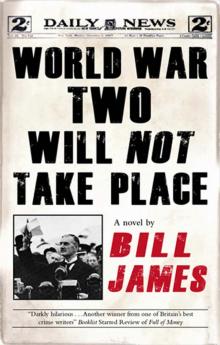 World War Two Will Not Take Place
World War Two Will Not Take Place Pix (Volume Book 24) (Harpur & Iles Mysteries)
Pix (Volume Book 24) (Harpur & Iles Mysteries) Disclosures
Disclosures The Principals
The Principals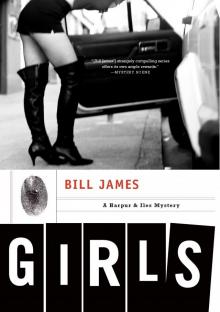 Girls
Girls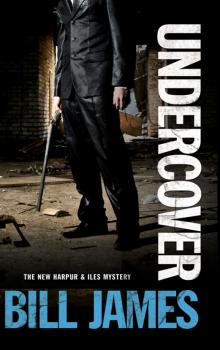 Undercover
Undercover Come Clean (1989)
Come Clean (1989)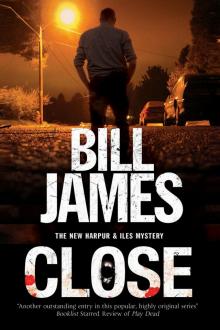 Close
Close Blaze Away
Blaze Away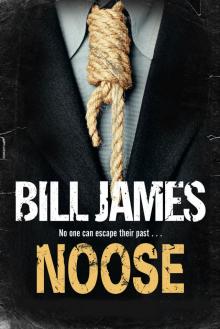 Noose
Noose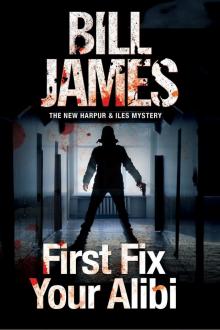 First Fix Your Alibi
First Fix Your Alibi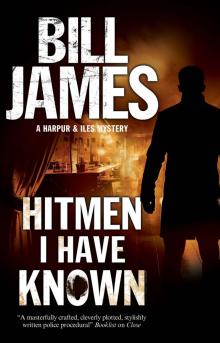 Hitmen I Have Known
Hitmen I Have Known Vacuum
Vacuum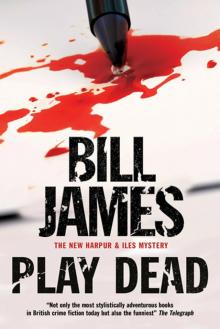 Play Dead
Play Dead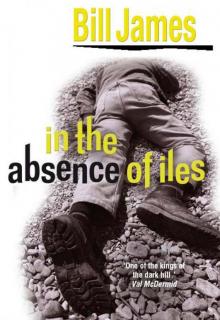 In the Absence of Iles
In the Absence of Iles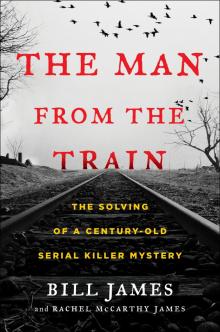 The Man from the Train
The Man from the Train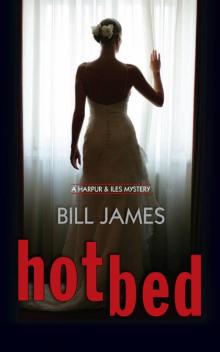 Hotbed
Hotbed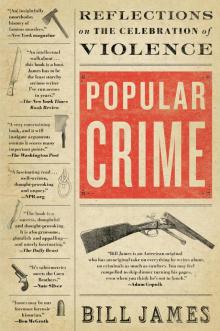 Popular Crime
Popular Crime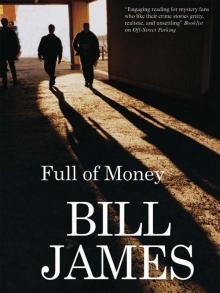 Full of Money
Full of Money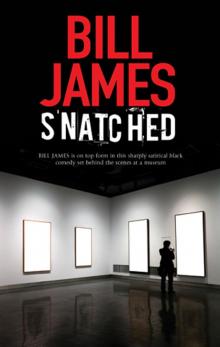 Snatched
Snatched